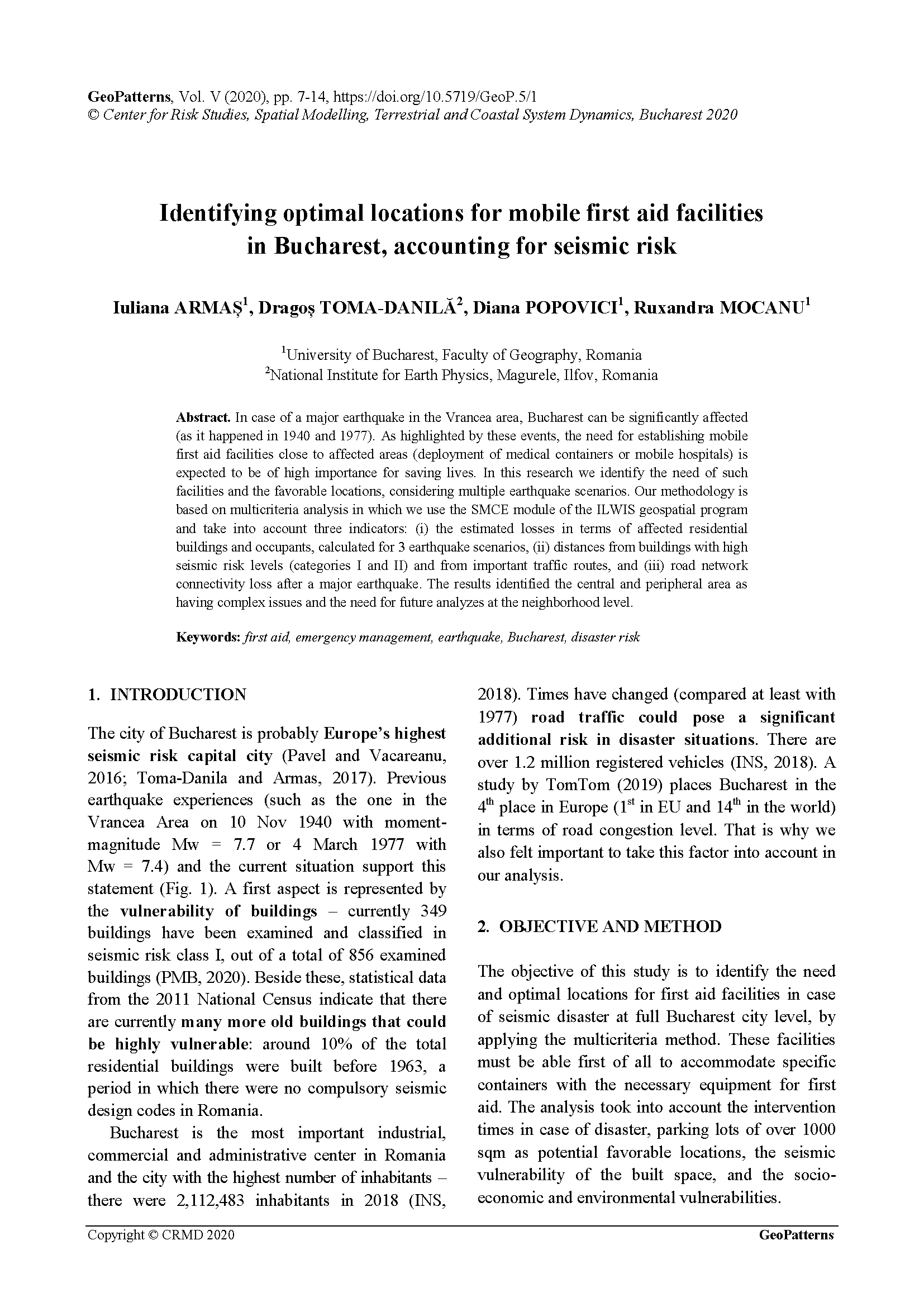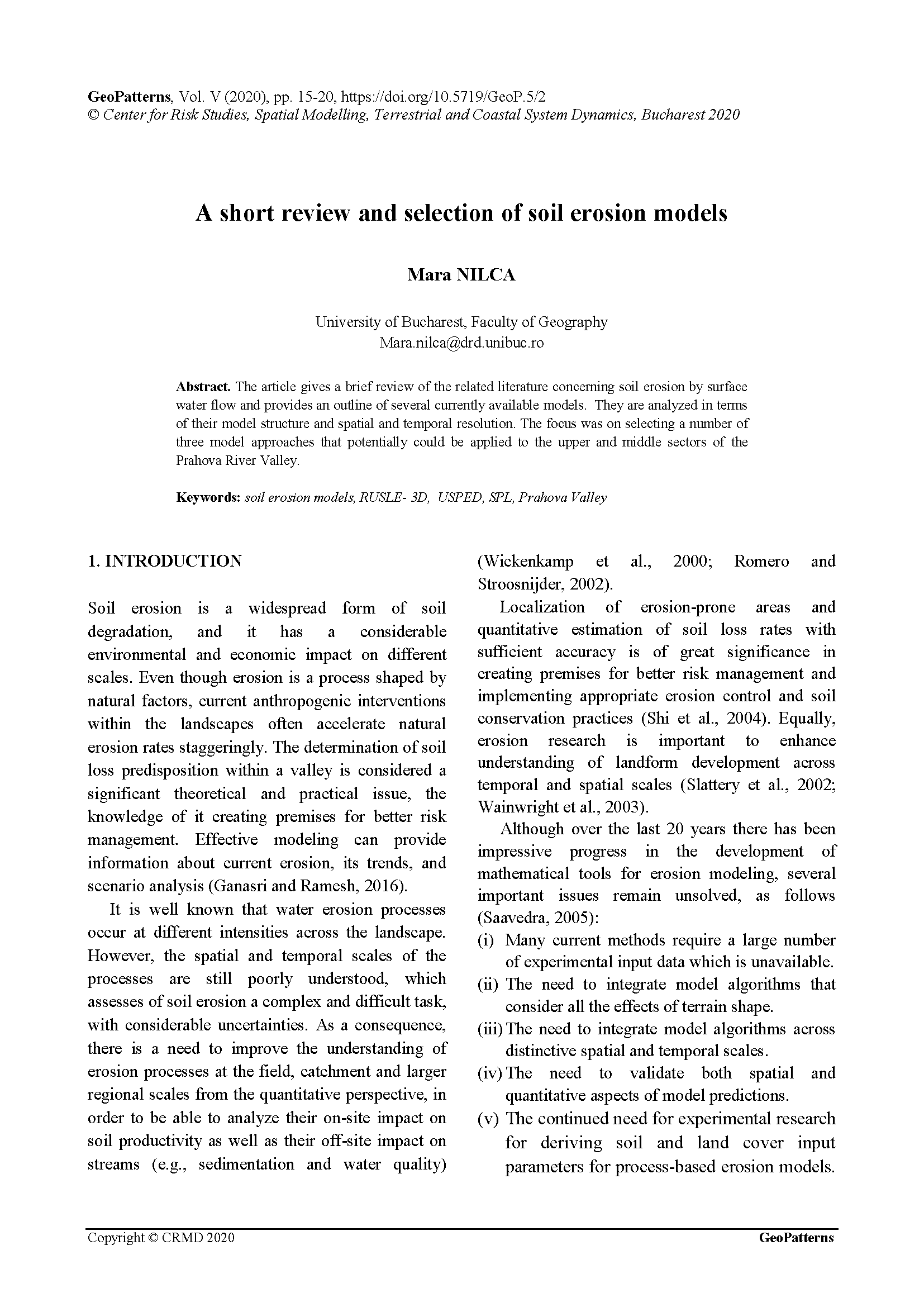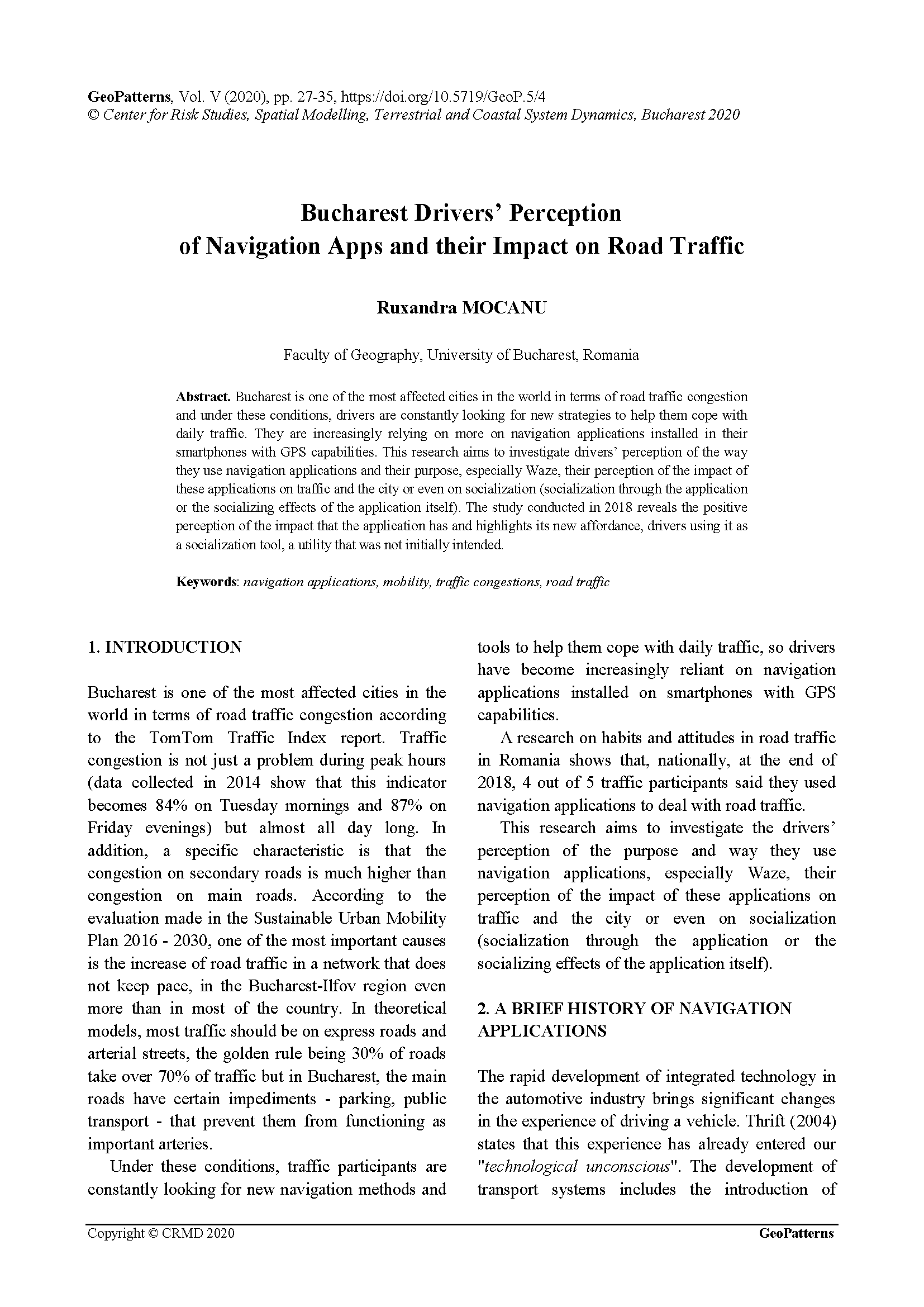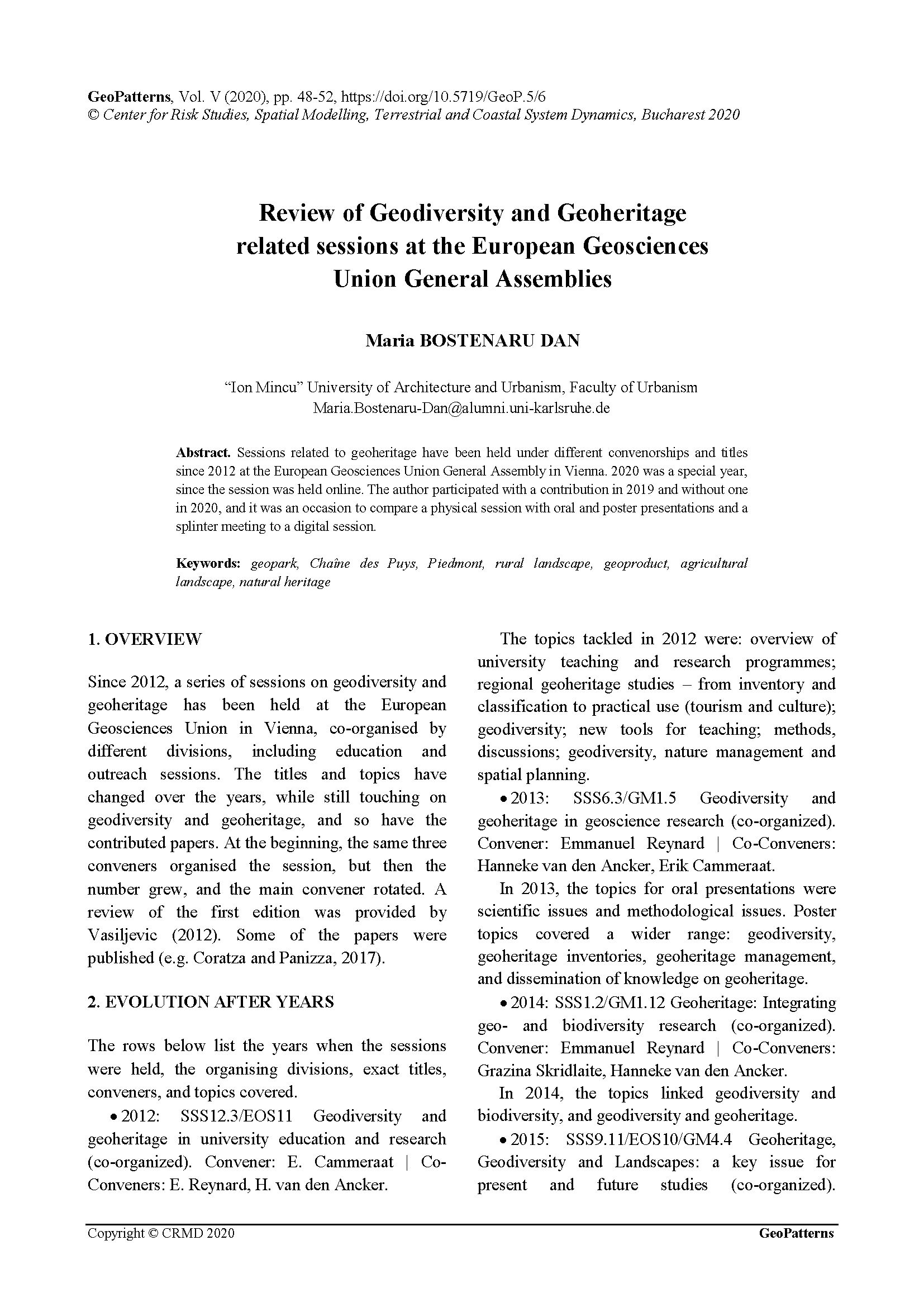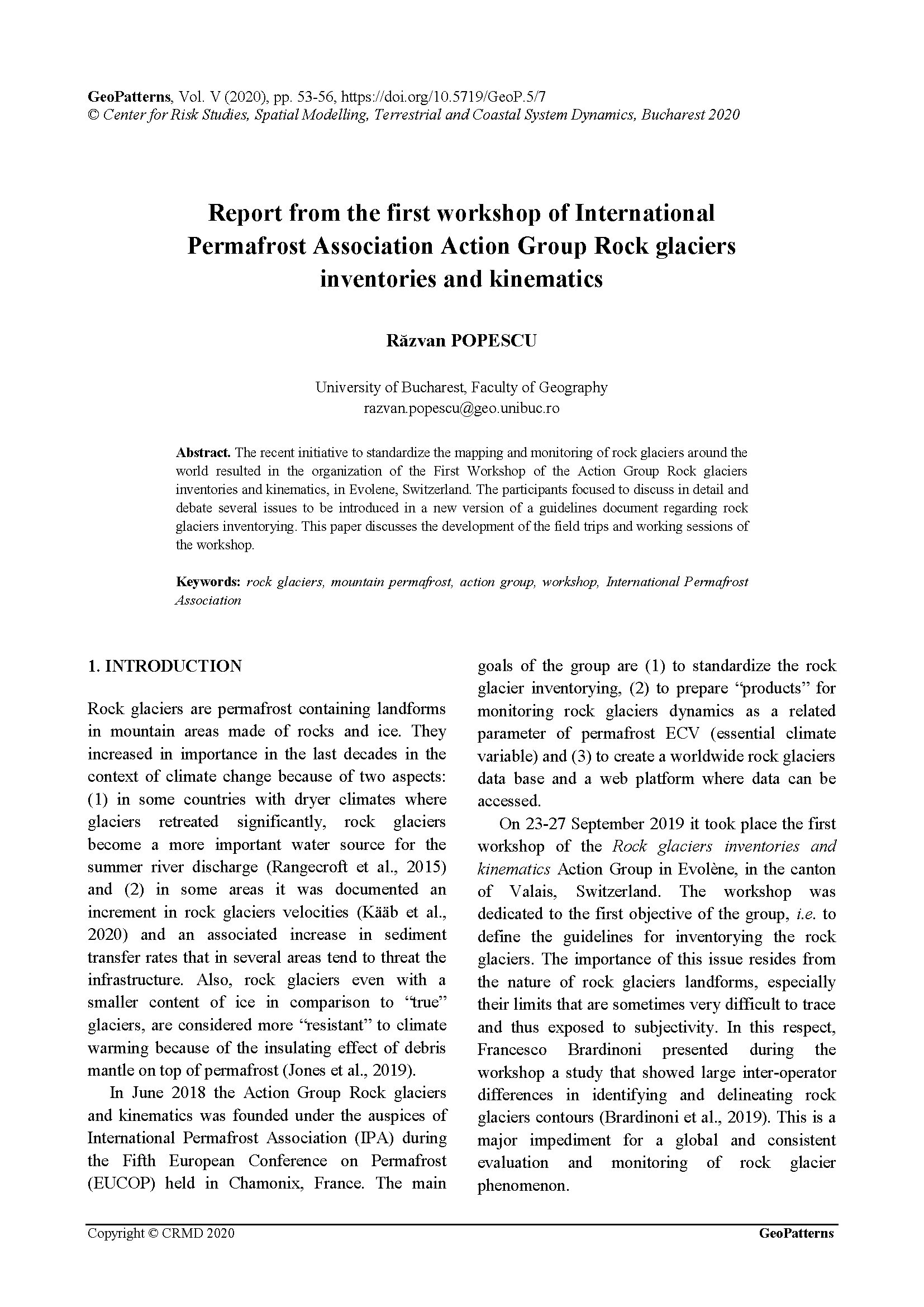Despre revistă
GeoPatterns a fost înființată în 2016, fiind o revistă susținută și promovată de Centrul pentru Studii de Risc, Modelare Spațială, Dinamica Sistemelor Terrestre și Costiere, Departamentul de Geomorfologie, Facultatea de Geografie, Universitatea din București. GeoPatterns publică lucrări de cercetare originale, de înaltă calitate științifică, cu DOI atribuit, în toate domeniile geosciințelor și științelor umaniste care aplică metodologii spațiale, precum și recenzii, note de cercetare și rapoarte. Scopul GeoPatterns este de a construi un cadru pentru înțelegerea holistică a planetei Pământ și a mediilor sale naturale și sociale, prin identificarea acelor paternuri complexe care susțin existența.
Toate lucrările științifice acceptate pentru publicare sunt analizate și evaluate de un comitet științific format din profesori universitari și cercetători din țară și străinătate, recunoscuți la nivel internațional în domeniul lor de expertiză.
Acoperirea tematică a revistei GeoPatterns face ca această revistă să fie o lectură de interes pentru geografi, dar și pentru cercetători din alte discipline, precum managementul dezastrelor, ecologie, geologie, sociologie, psihologie, antropologie, mediu, planificare urbană și studii culturale. Limba principală a revistei este engleza.
GeoPatterns este o revistă cu acces liber, iar conținutul revistei este disponibil gratuit imediat după publicare.
Număr curent
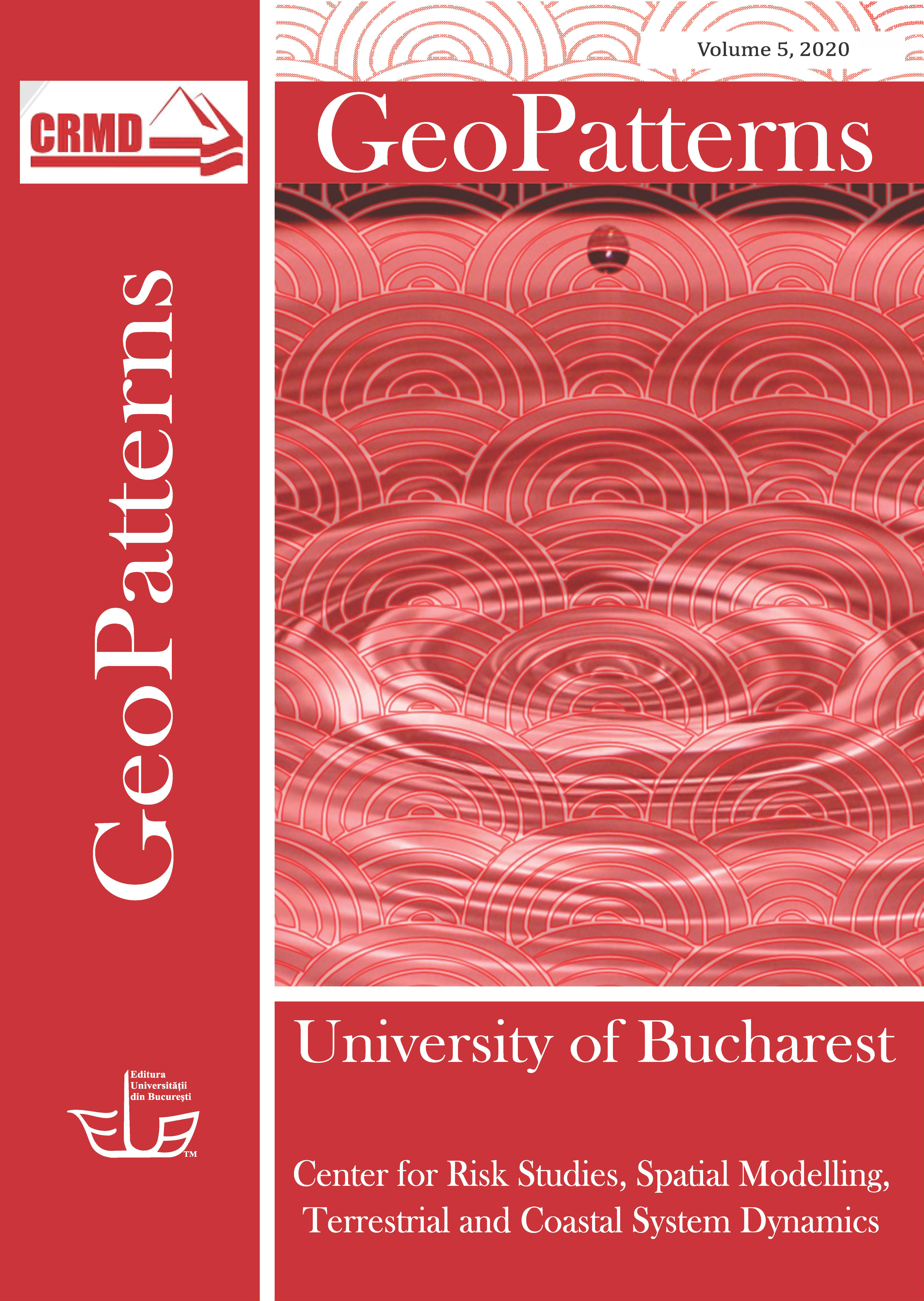
GeoPatterns’s topics coverage makes the journal essential reading for geographers, as well as for researchers from other disciplines, such as disaster management, ecology, geology, sociology, psychology, anthropology (links nature and culture), environmental studies, urban planning, and cultural studies. The main language of the journal is English.
Număr complet
Articles
-
Identifying optimal locations for mobile first aid facilities in Bucharest, accounting for seismic risk
Rezumat
In case of a major earthquake in the Vrancea area, Bucharest can be significantly affected (as it happened in 1940 and 1977). As highlighted by these events, the need for establishing mobile first aid facilities close to affected areas (deployment of medical containers or mobile hospitals) is expected to be of high importance for saving lives. In this research we identify the need of such
facilities and the favorable locations, considering multiple earthquake scenarios. Our methodology is based on multicriteria analysis in which we use the SMCE module of the ILWIS geospatial program and take into account three indicators: (i) the estimated losses in terms of affected residential buildings and occupants, calculated for 3 earthquake scenarios, (ii) distances from buildings with high
seismic risk levels (categories I and II) and from important traffic routes, and (iii) road network connectivity loss after a major earthquake. The results identified the central and peripheral area as having complex issues and the need for future analyzes at the neighborhood level. -
A short review and selection of soil erosion models
Rezumat
The article gives a brief review of the related literature concerning soil erosion by surface water flow and provides an outline of several currently available models. They are analyzed in terms of their model structure and spatial and temporal resolution. The focus was on selecting a number of three model approaches that potentially could be applied to the upper and middle sectors of the
Prahova River Valley. -
InSAR digital terrain models for mining areas based on Sentinel-1 imagery. A case study in Căliman area InSAR digital terrain models for mining areas based on Sentinel-1 imagery. A case study in Căliman area
Rezumat
Although not intended at first, SAR satellite technology has been used for digital terrain models (DTM) generation and displacement monitoring for the last 30 years starting with the launch of the first RADAR imaging satellite by the European Spatial Agency (ESA), ERS-1. Currently, there is a suite of satellites available for these applications, with ESA’s Sentinel-1 being one of the most accessible and exploited by scientists due to its wide and free of costs availability. The C-band repeatpass interferometer is considered unsuitable for DTM generation due to its acquisition geometry. In this study, a DTM based on Sentinel-1 imagery for the former sulphur quarry mine in Căliman Mountains is derived in order to demonstrate the potential of the dataset for time and cost effective
monitoring of large areas. -
Bucharest Drivers’ Perception of Navigation Apps and their Impact on Road Traffic
Rezumat
Bucharest is one of the most affected cities in the world in terms of road traffic congestion and under these conditions, drivers are constantly looking for new strategies to help them cope with daily traffic. They are increasingly relying on more on navigation applications installed in their smartphones with GPS capabilities. This research aims to investigate drivers’ perception of the way
they use navigation applications and their purpose, especially Waze, their perception of the impact of these applications on traffic and the city or even on socialization (socialization through the application or the socializing effects of the application itself). The study conducted in 2018 reveals the positive perception of the impact that the application has and highlights its new affordance, drivers using it as a socialization tool, a utility that was not initially intended. -
P. Krugman’s Core-Periphery Model. Case Study: The Tourist Demand on the Romanian Seaside
Rezumat
Krugman's model is a new approach for Romania, even more applied to the Black Sea seaside. The tourist demand in such a way reveals the relations not only economic, but also of another nature between the core and the periphery. The data clearly show that this model is a forceful one, applicable not only to the Romanian seaside, but also to the region, country or continent, and its study
can reveal very interesting conclusions: the influence of the core on the periphery, how the North and the South interact in the chosen model and how seasonality affects seaside tourism. -
Review of Geodiversity and Geoheritage related sessions at the European Geosciences Union General Assemblies
Rezumat
Sessions related to geoheritage have been held under different convenorships and titles since 2012 at the European Geosciences Union General Assembly in Vienna. 2020 was a special year, since the session was held online. The author participated with a contribution in 2019 and without one in 2020, and it was an occasion to compare a physical session with oral and poster presentations and a splinter meeting to a digital session.
-
Report from the first workshop of International Permafrost Association Action Group Rock glaciers inventories and kinematics
Rezumat
The recent initiative to standardize the mapping and monitoring of rock glaciers around the world resulted in the organization of the First Workshop of the Action Group Rock glaciers inventories and kinematics, in Evolene, Switzerland. The participants focused to discuss in detail and debate several issues to be introduced in a new version of a guidelines document regarding rock glaciers inventorying. This paper discusses the development of the field trips and working sessions of the workshop.

